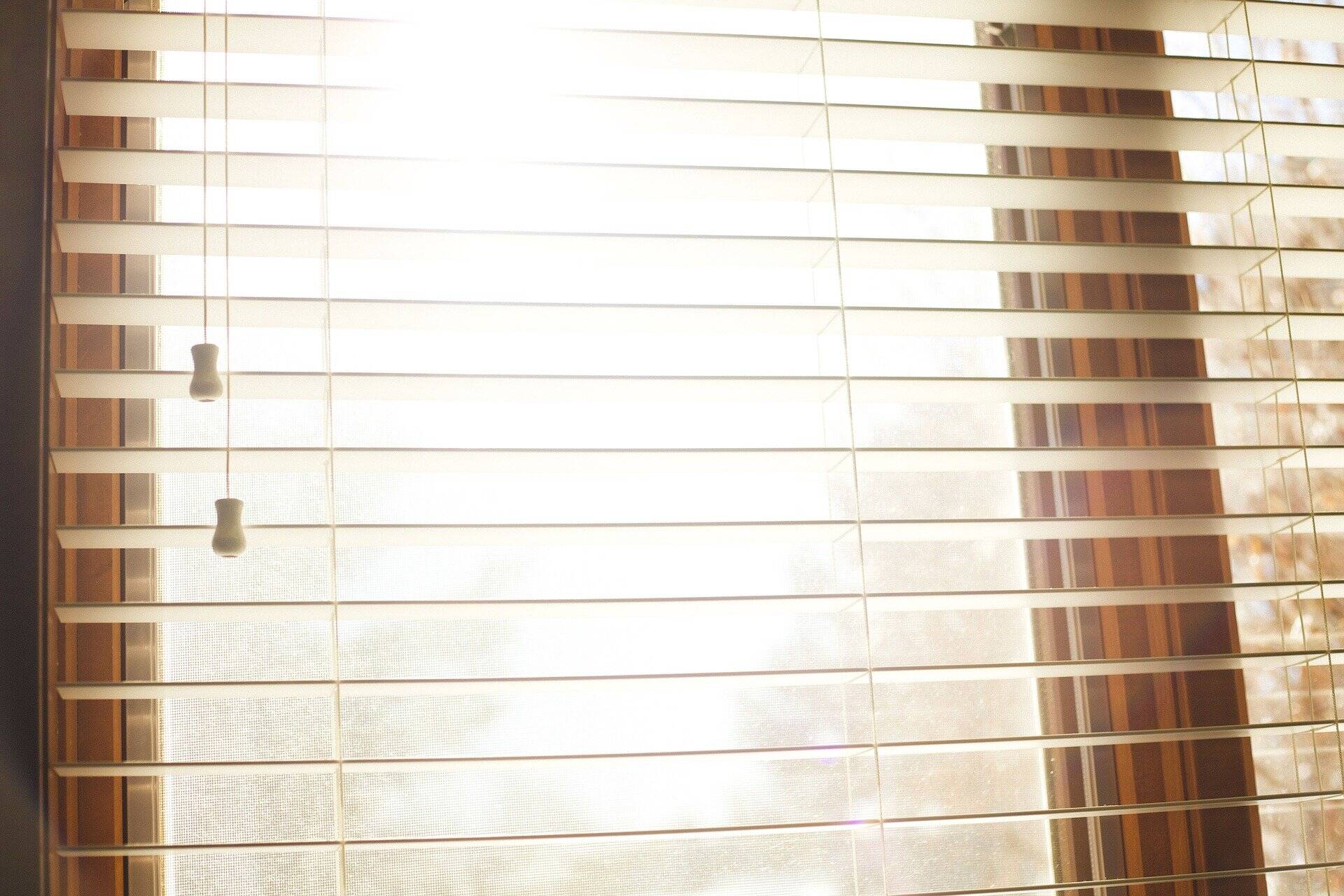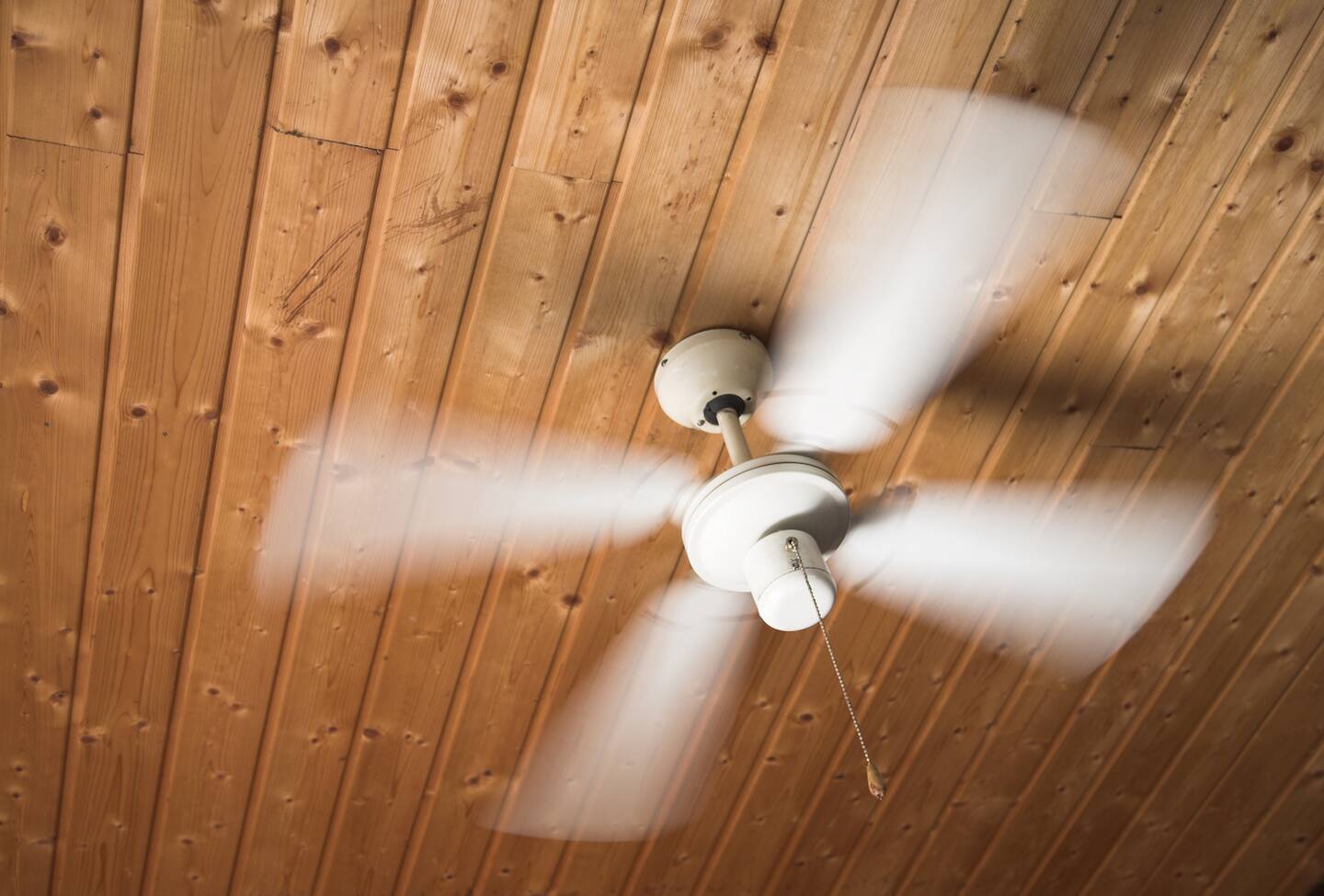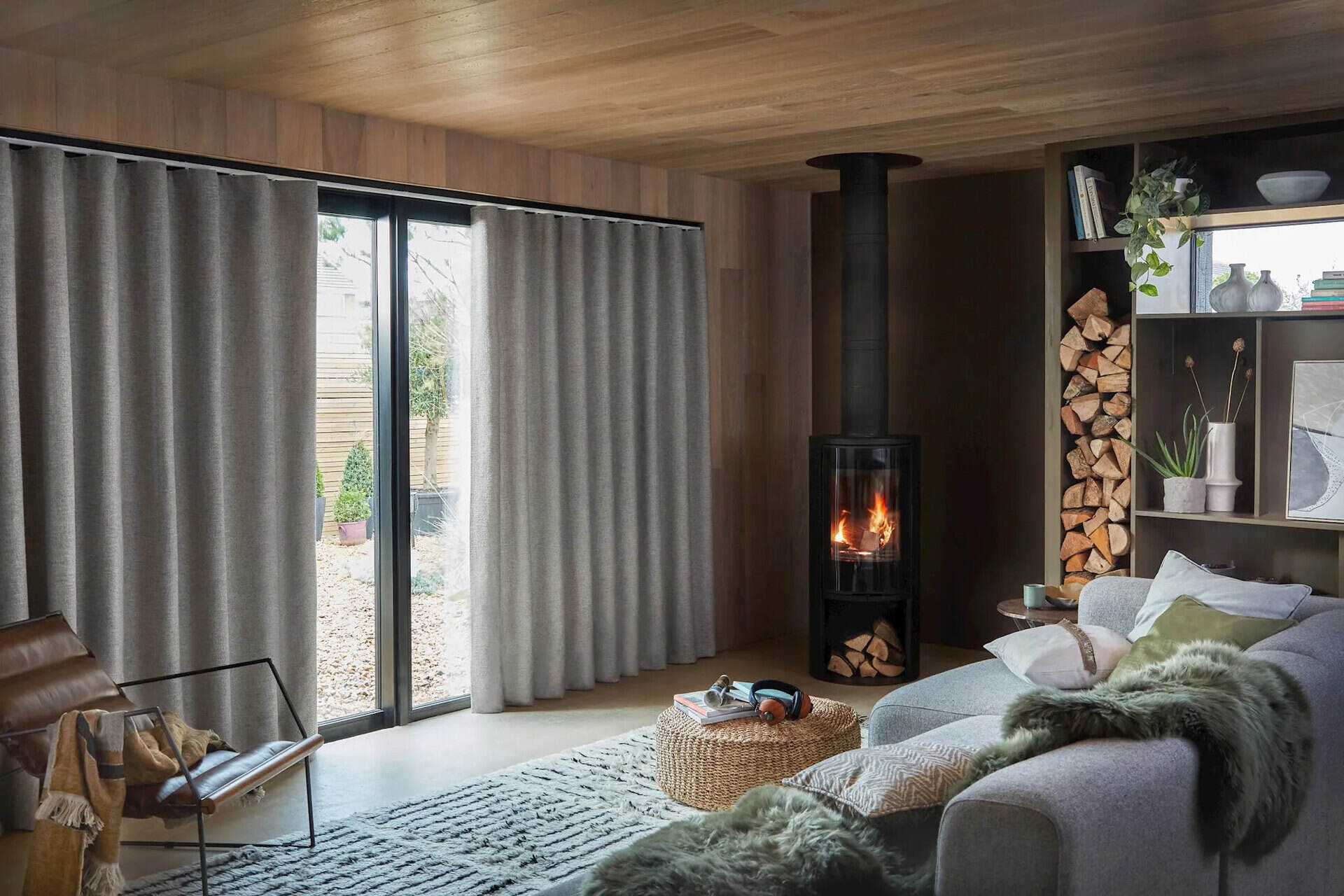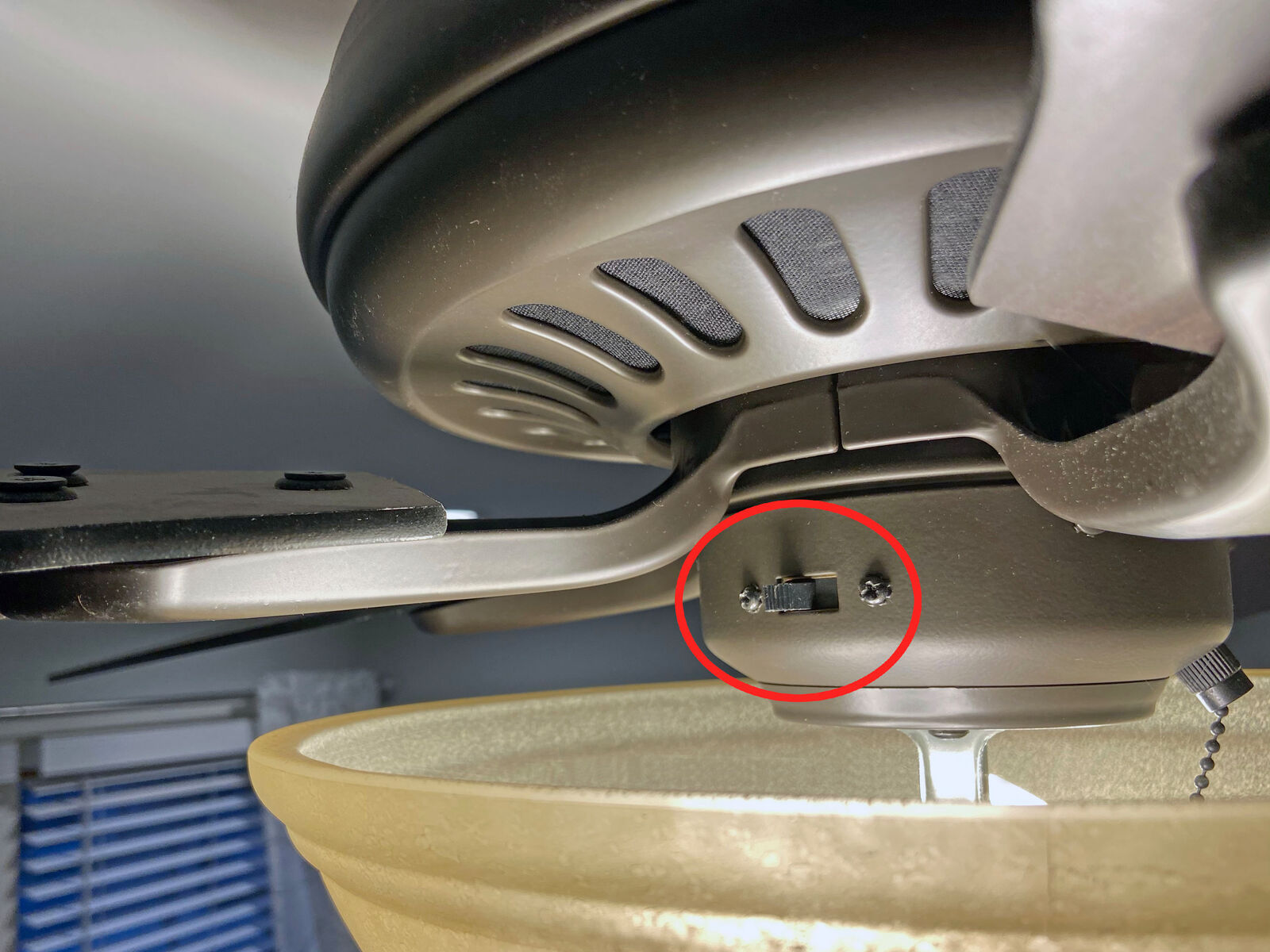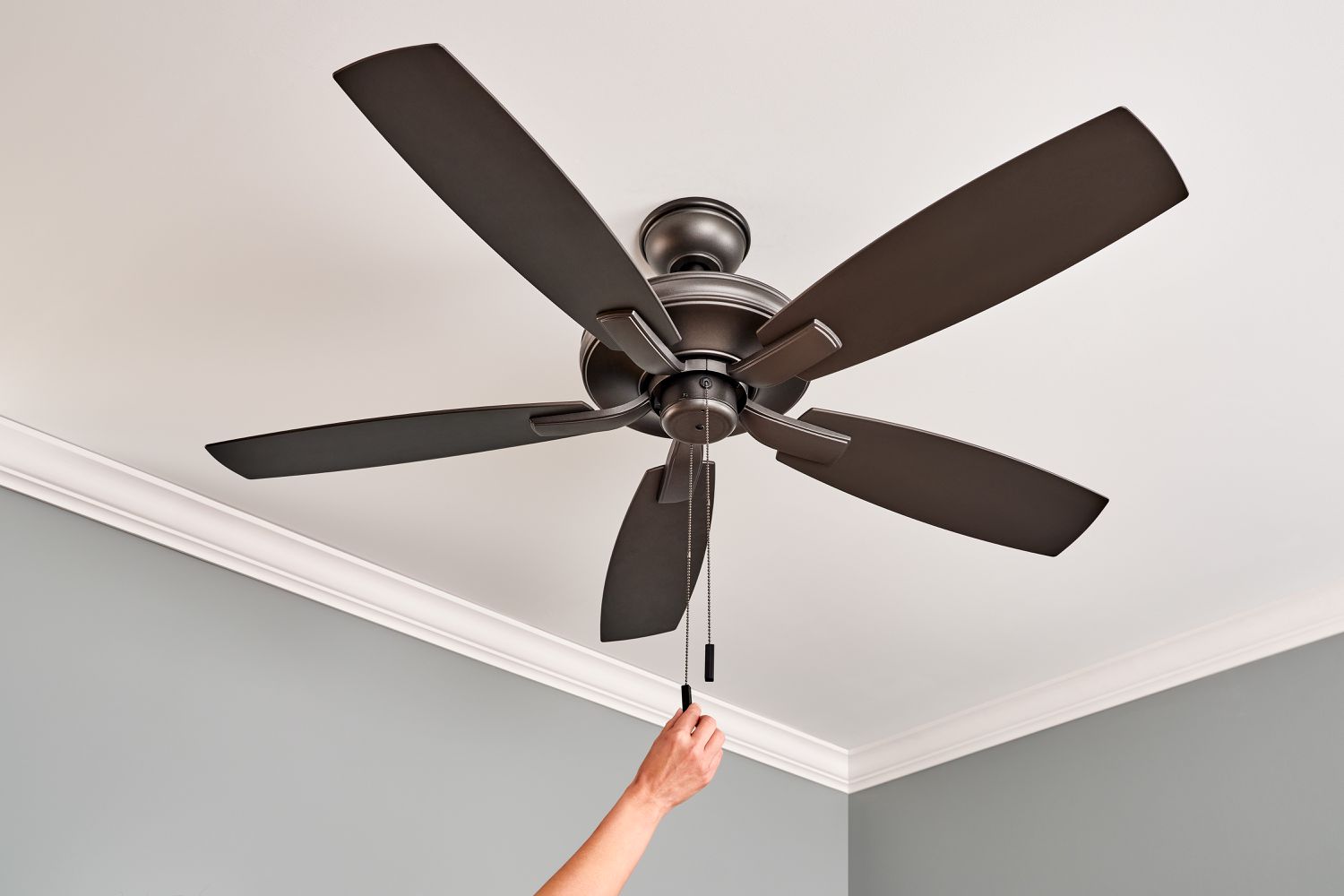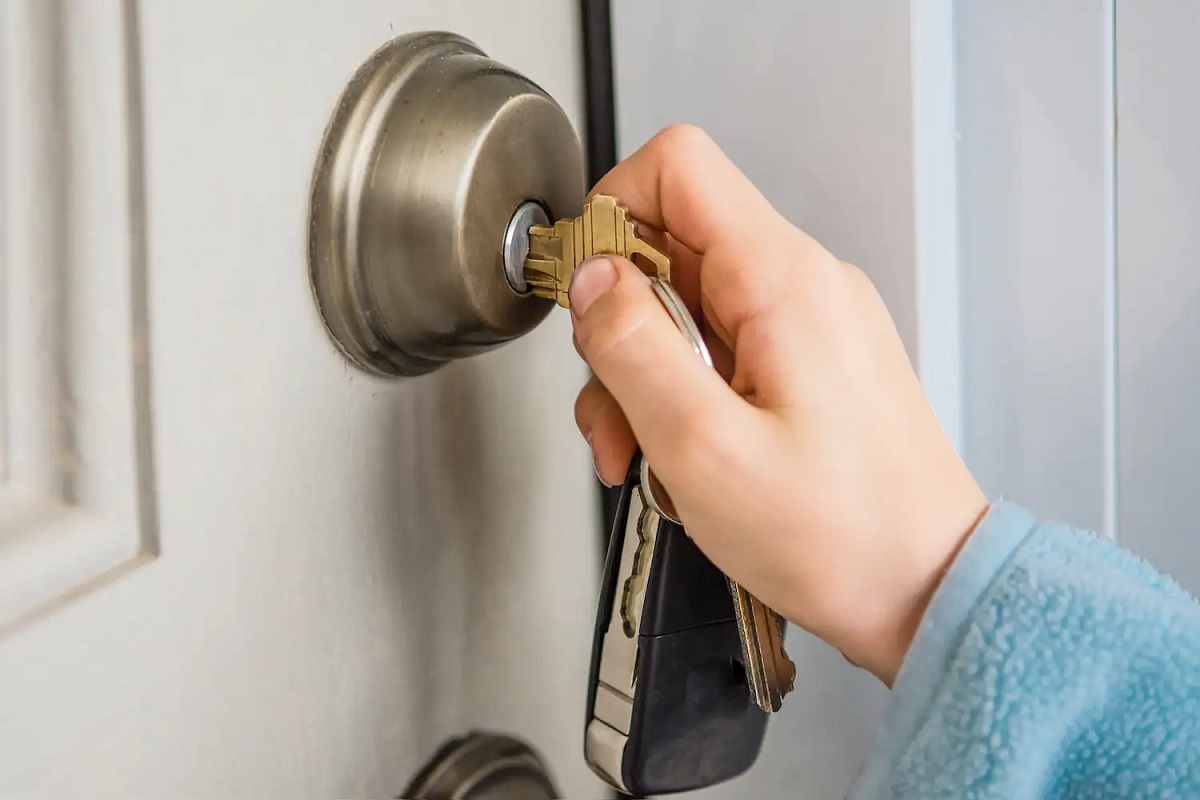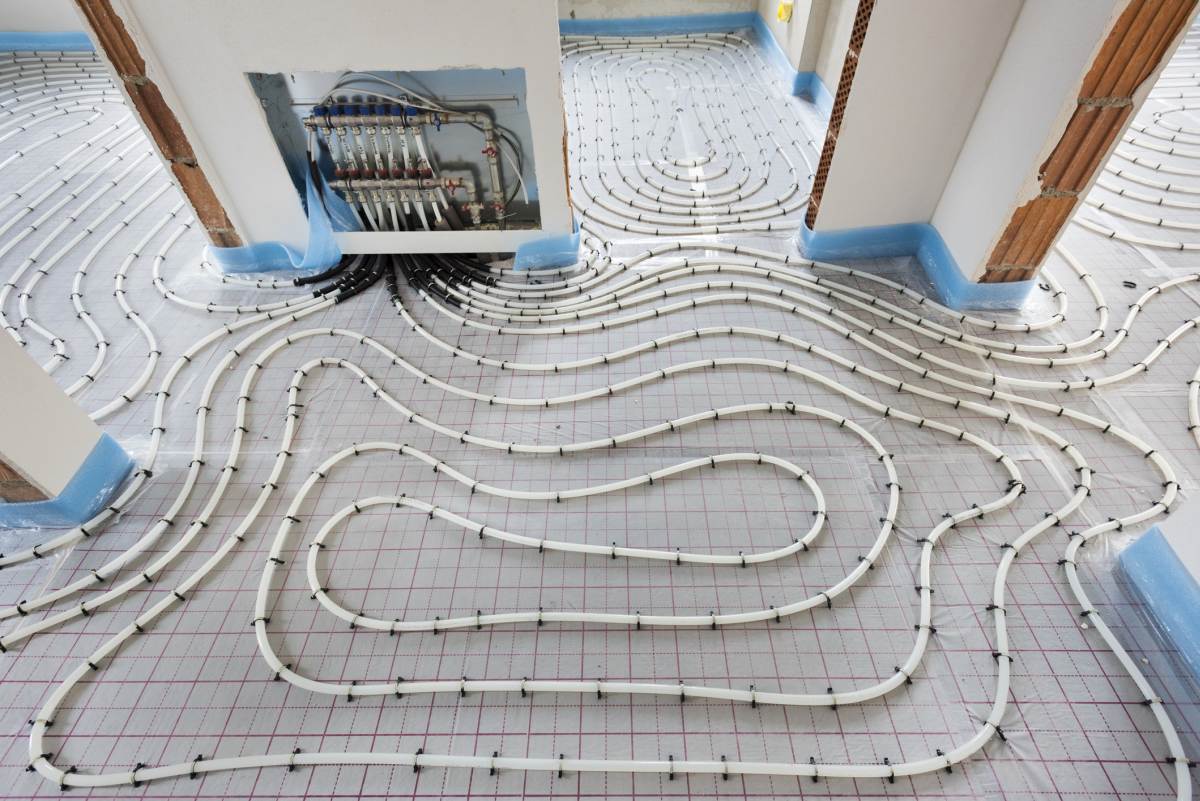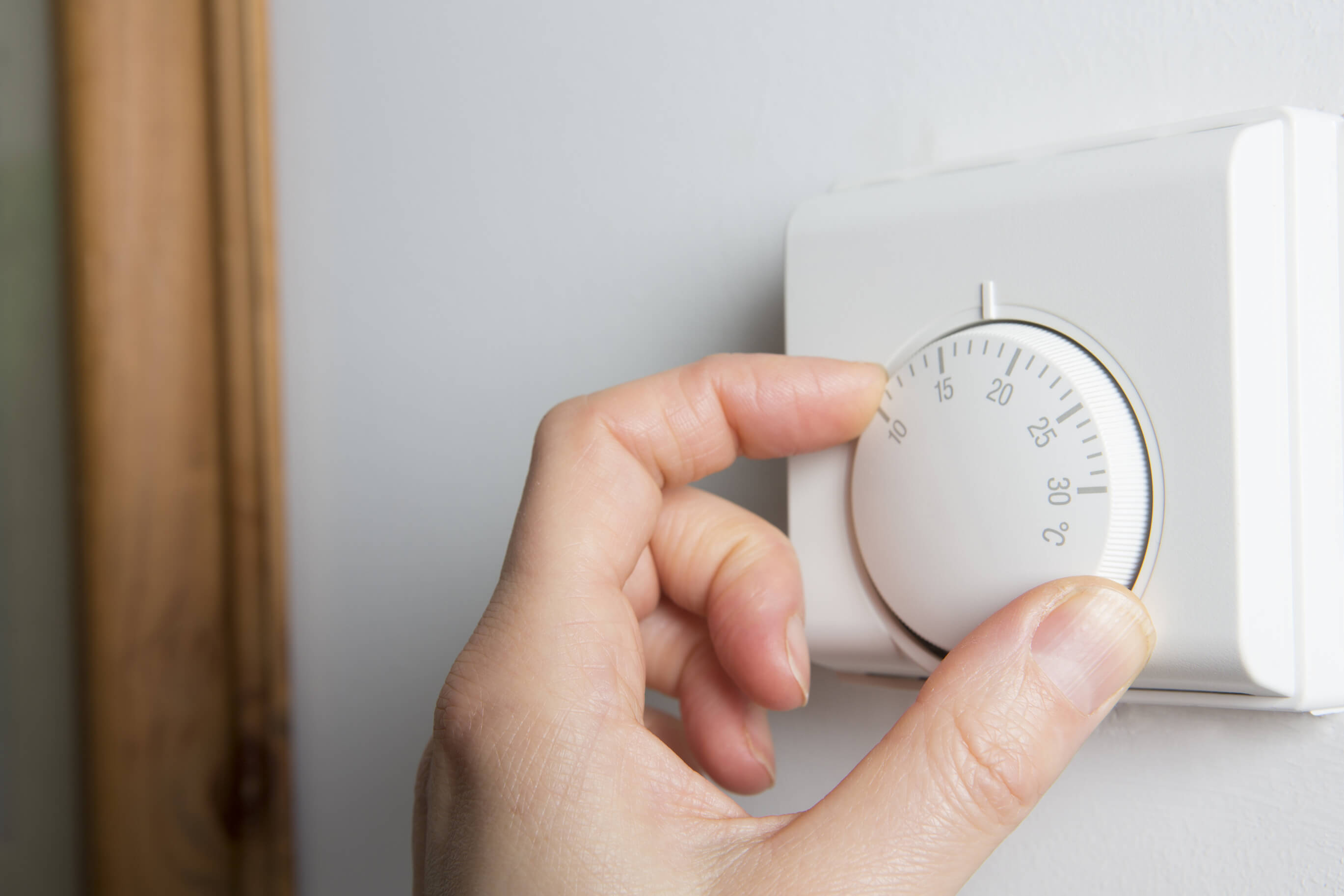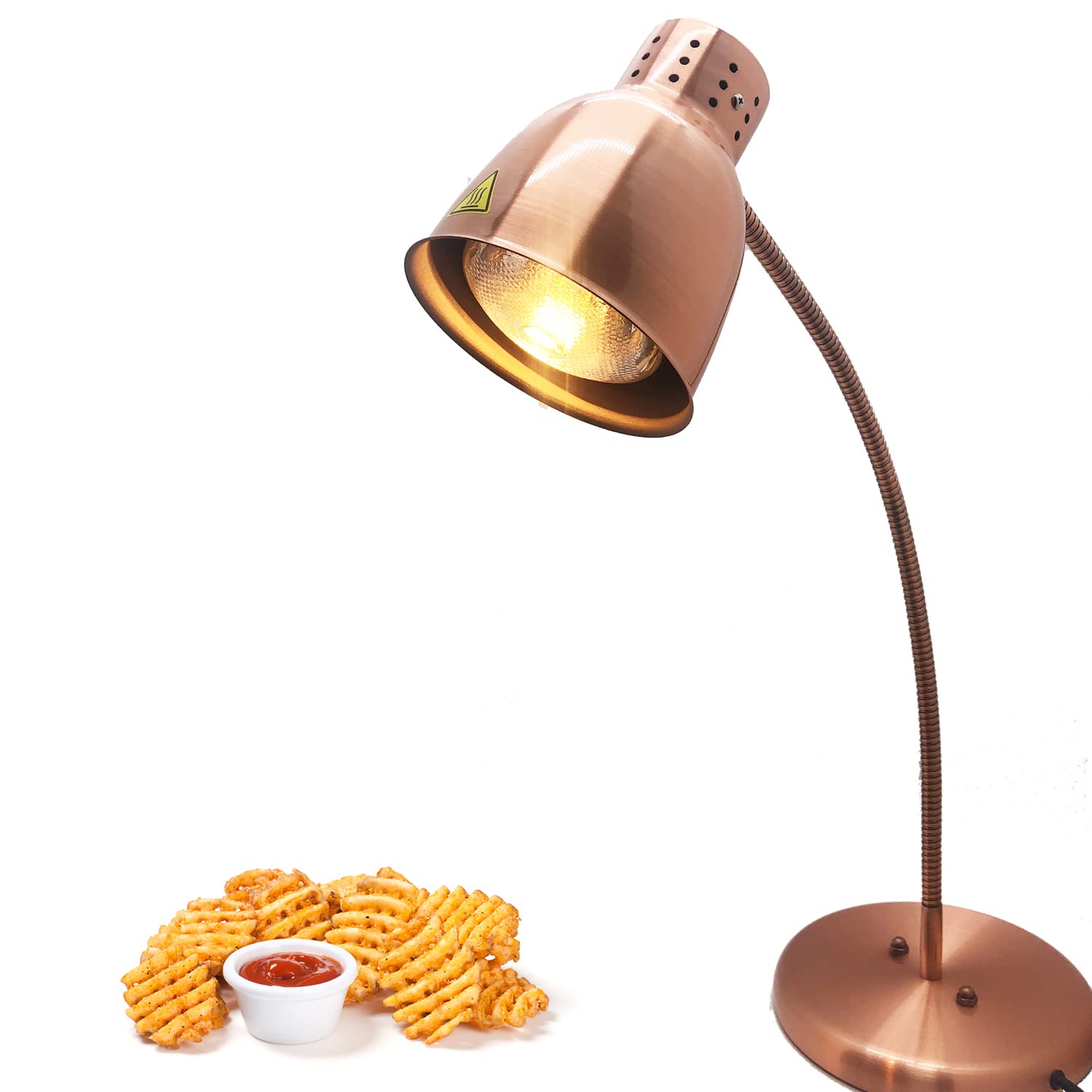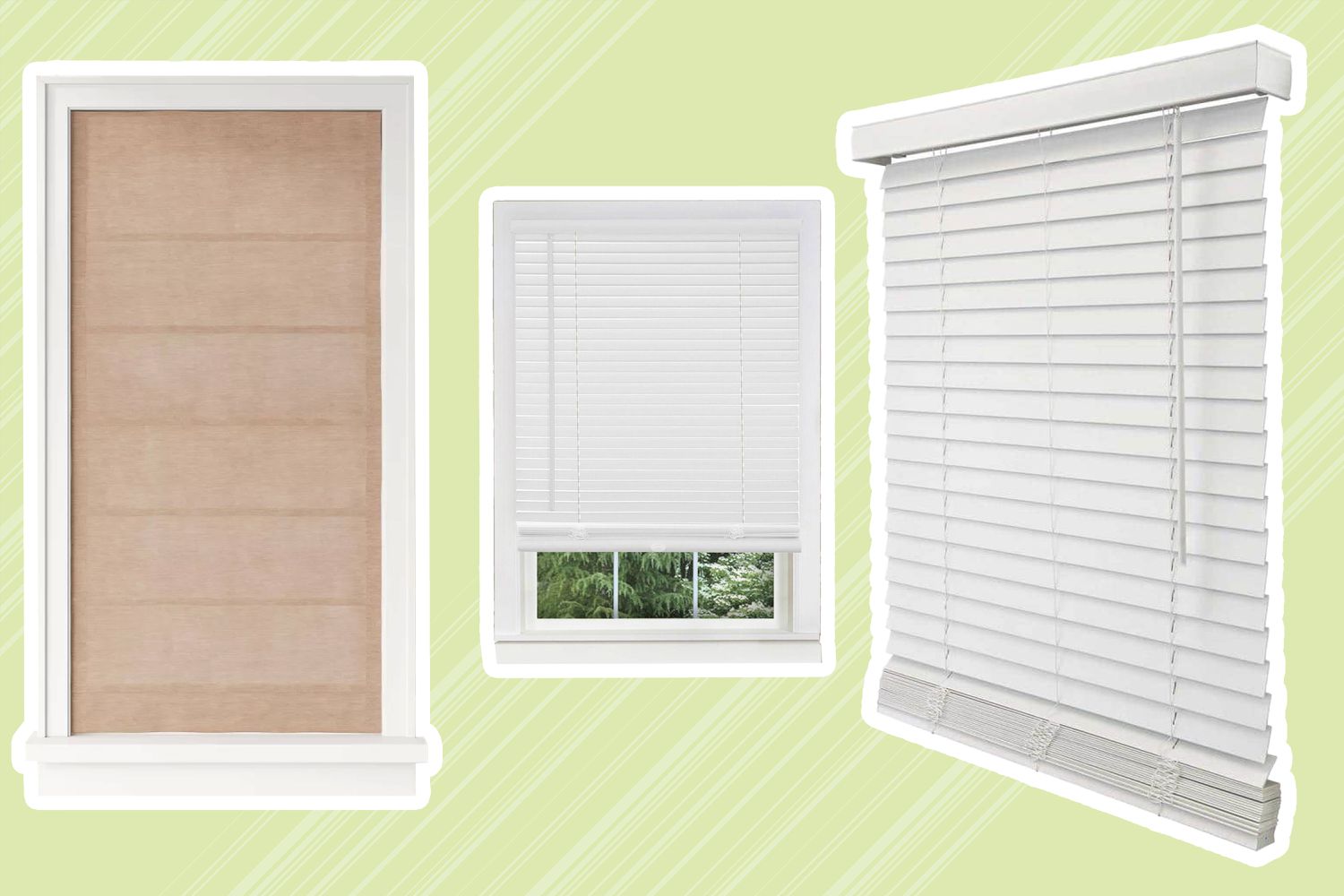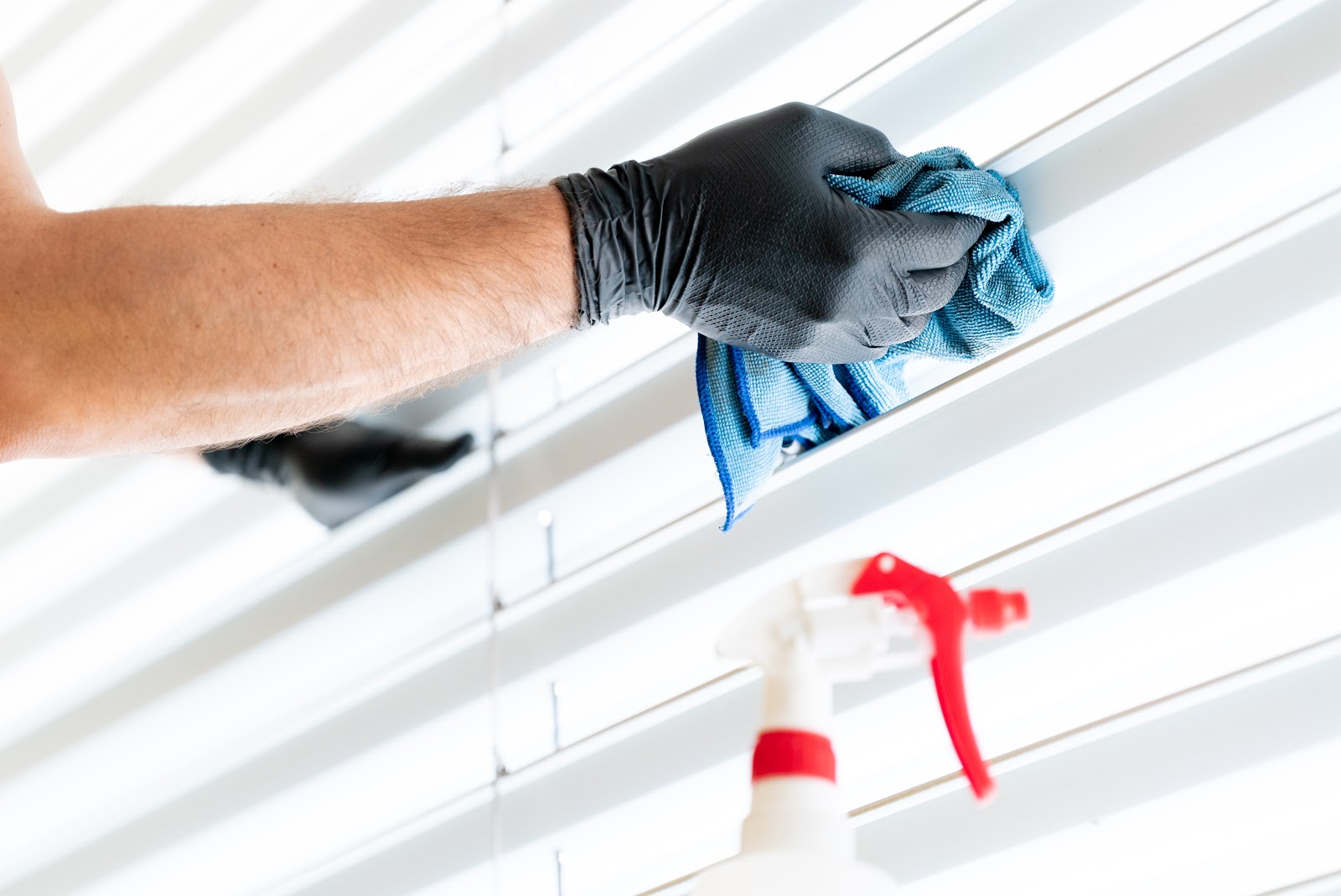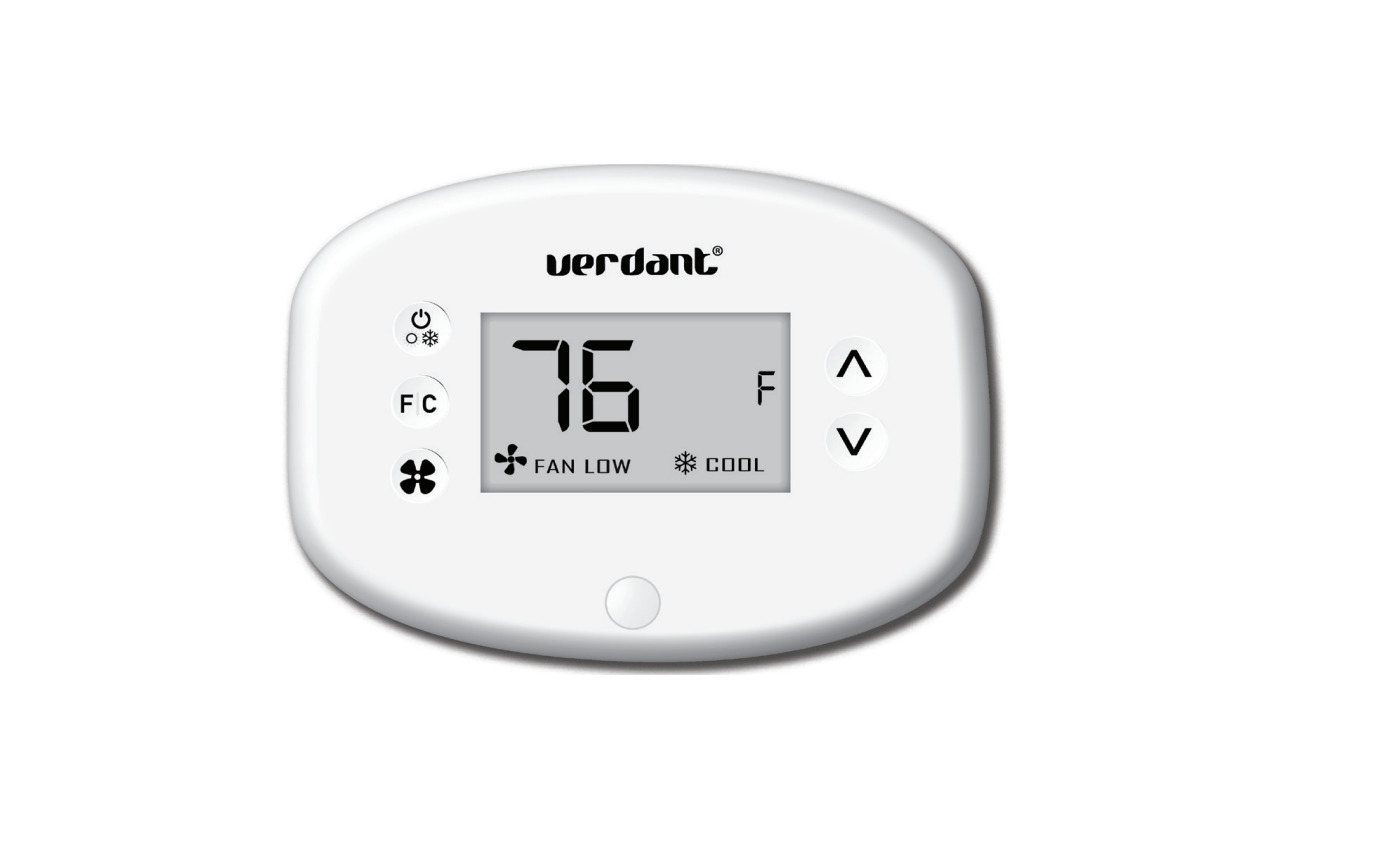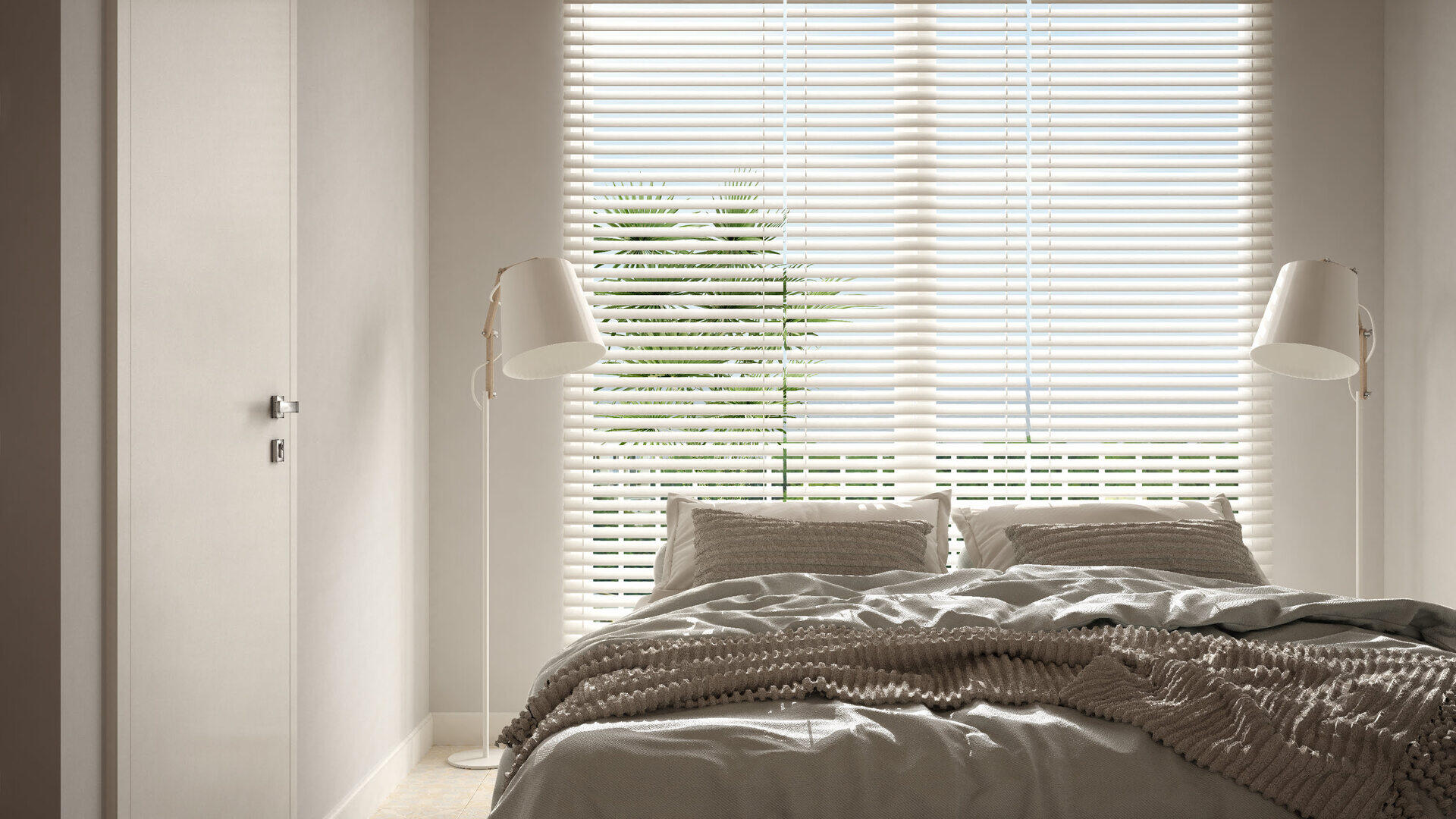

Articles
Which Way To Turn Blinds To Keep Heat Out
Modified: January 23, 2024
Learn the best way to turn your blinds to keep heat out and save on energy bills. Read our articles for tips and tricks to maximize efficiency in your home.
(Many of the links in this article redirect to a specific reviewed product. Your purchase of these products through affiliate links helps to generate commission for Storables.com, at no extra cost. Learn more)
Introduction
Welcome to our guide on how to effectively use blinds to keep heat out of your home or office. As the temperatures rise during the summer months, it becomes essential to find ways to keep our living spaces cool and comfortable. Blinds are not only a practical and aesthetic addition to any room, but they can also play a significant role in reducing the amount of heat entering through windows.
In this article, we will delve into the science behind heat transfer, discuss the optimal angle to turn blinds for heat reduction, explore the effectiveness of different types of blinds, highlight the energy-saving benefits of using blinds, provide tips for choosing the right blinds for heat control, and offer additional methods to help keep your space cool.
By the end of this article, you will have a better understanding of how to use blinds to create a cooler environment, helping you beat the heat and save on energy costs.
Key Takeaways:
- Blinds are a versatile and effective solution for keeping out heat by controlling light, providing insulation, and reflecting sunlight. Understanding the optimal angle to position blinds can maximize their cooling effect and contribute to energy savings.
- When choosing blinds for heat control, factors such as material, opacity, color, size, and fit should be considered. Combining blinds with other methods like window film, insulated curtains, and exterior shading can further enhance heat reduction efforts for a cooler and more energy-efficient living or working space.
Read more: Which Way To Have Blinds For Privacy
Why Blinds Are Effective in Keeping Out Heat
Blinds are a versatile window covering option that can effectively help to keep out heat from entering your living space. They work by providing a physical barrier between the interior space and the outside environment. Here are some key reasons why blinds are effective in keeping out heat:
- Light and Heat Control: Blinds allow you to have control over the amount of sunlight and heat that enters your room. By adjusting the angle of the blinds or fully closing them, you can block or reduce the amount of heat and sunlight that penetrates the window.
- Insulation: Blinds provide an extra layer of insulation by creating a gap between the window and the room. This layer helps to prevent heat from conducting through the windowpane and into your space.
- Reflective Properties: Some types of blinds, such as those made from reflective materials or coated with reflective coatings, can redirect sunlight and heat away from the window. This reduces the amount of heat that enters your room, keeping it cooler.
- Privacy: Blinds offer privacy by blocking the view from the outside, which also helps to reduce the amount of heat that enters the room. By keeping prying eyes out, you can minimize the need for opening windows, which can allow hot air to flow in.
- Versatility: Blinds come in various styles, materials, and designs, allowing you to choose the ones that best suit your preferences and needs. Whether you opt for roller blinds, vertical blinds, or Venetian blinds, there is a wide selection available to provide optimal heat control.
It is important to note that while blinds can be effective in keeping out heat, their effectiveness may vary depending on factors such as the type of blinds, the location of windows, the orientation of your building, and the outdoor climate. It is advisable to consider these factors when choosing blinds for heat reduction purposes.
Now that we understand why blinds are effective in keeping out heat, let us delve deeper into the science of heat transfer to determine the optimal angle to turn blinds to maximize their cooling effect.
Understanding Heat Transfer
To effectively use blinds for heat reduction, it is essential to have a basic understanding of how heat transfer occurs. Heat transfer can happen through three different mechanisms: conduction, convection, and radiation.
Conduction: Conduction is the transfer of heat through direct contact. When one object is in contact with a hotter object, heat is transferred from the hotter object to the cooler one. In terms of windows, heat can conduct through the glass, allowing it to enter the room.
Convection: Convection is the transfer of heat through the movement of fluids, such as air or water. When hot air comes into contact with a cool surface, it cools down and sinks, while the warmer air rises. This movement creates air currents that can carry heat into the room.
Radiation: Radiation is the transfer of heat through electromagnetic waves. The sun emits radiant energy, and when it comes into contact with objects, such as windows, some of that energy is absorbed or reflected. The absorbed energy can then be radiated into the room as heat.
When it comes to using blinds for heat reduction, the aim is to minimize all three methods of heat transfer. By doing so, we can keep our spaces cooler and reduce the need for excessive cooling methods, which can result in higher energy consumption.
Now that we have a clearer understanding of heat transfer, let us explore the optimal angle to turn blinds for maximum heat reduction.
Determining the Optimal Angle of Blinds
When it comes to effectively using blinds to keep out heat, finding the optimal angle to turn the blinds is key. The angle at which you position your blinds can greatly impact the amount of heat that enters your space. Here are some tips to help you determine the optimal angle of your blinds:
- Consider the Sun’s Position: Understanding the path of the sun throughout the day is crucial in determining the optimal angle of your blinds. The goal is to block the direct sunlight from entering your space when it is at its strongest. During the hottest part of the day, typically late morning to early afternoon, you should have your blinds fully closed or angled downward to prevent direct sunlight from heating up the room.
- Experiment with Different Angles: To find the most effective angle, you may need to experiment with different positions of your blinds throughout the day. Start by tilting the blinds downward at a slight angle and observe the temperature in your room. If you notice that the room is still heating up, adjust the angle until you find the position that provides the best heat reduction.
- Consider the Window Orientation: The orientation of your windows can also influence the optimal angle for your blinds. South-facing windows receive more sunlight throughout the day compared to north-facing or east/west-facing windows. Adjusting the blinds based on the specific orientation can help maximize heat reduction.
- Take Exterior Shading into Account: If you have external shading devices, such as awnings or overhangs, consider how they impact the position of the sun in relation to your windows. These external elements can provide additional shading and allow you to adjust the blinds accordingly.
- Use Motorized Blinds: Motorized blinds offer the convenience of automatically adjusting the position throughout the day. Some systems are even equipped with light sensors that can detect the intensity of sunlight and adjust accordingly, ensuring optimal heat reduction.
Keep in mind that the optimal angle of blinds may vary depending on the specific conditions of your space, such as window size, proximity to reflective surfaces, and the type of blinds you have. Regular monitoring and adjusting are necessary to adapt to changing weather conditions and maximize the cooling potential of your blinds.
Now that we have a better understanding of the optimal angle of blinds, let’s explore the effectiveness of different types of blinds in keeping out heat.
Effectiveness of Different Types of Blinds
When it comes to keeping out heat, not all blinds are created equal. Different types of blinds offer varying levels of effectiveness in reducing heat transfer. Here, we’ll explore some common types of blinds and discuss their effectiveness in keeping your space cool:
- Roller Blinds: Roller blinds are a popular and versatile option. They consist of a single piece of fabric that can be rolled up or down to control light and heat. Depending on the fabric used, roller blinds can provide effective heat reduction, especially when made with light-colored or reflective materials that reflect sunlight away from the window.
- Vertical Blinds: Vertical blinds are made up of vertical slats that can be tilted to control light and heat. While they may not completely block out sunlight, vertical blinds can help to diffuse it, reducing the amount of heat that enters the room. They are particularly effective when made with light-colored or heat-reflective materials.
- Venetian Blinds: Venetian blinds are horizontal slats that can be tilted to control light and heat. The ability to adjust the angle of the slats makes Venetian blinds effective in managing heat. When the slats are angled upward, they reflect sunlight toward the ceiling, reducing direct heat transmission into the room. Choosing blinds with larger slats can enhance their heat-reducing capabilities.
- Cellular or Honeycomb Blinds: Cellular or honeycomb blinds are designed with a unique cellular structure that traps air within the cells. This construction provides excellent insulation and helps to reduce heat transfer through windows. Cellular blinds can effectively keep your space cooler during hot weather, making them a popular choice for energy-efficient homes.
- Blackout Blinds: While blackout blinds are primarily designed to block out light, they also offer some heat reduction benefits. When fully closed, blackout blinds create an additional barrier between the room and the window, limiting heat transfer. They are particularly effective in rooms where blocking light and heat is a top priority, such as bedrooms or media rooms.
It’s important to note that the effectiveness of blinds in keeping out heat may also depend on factors such as the quality of materials used, the fit of the blinds within the window frame, and the presence of gaps or cracks that allow heat to seep in. Additionally, combining blinds with other window treatments, such as curtains or shades, can further enhance their heat reduction capabilities.
Now that we understand the effectiveness of different types of blinds, let’s explore how blinds can help reduce energy consumption.
During hot weather, turn your blinds upwards to reflect sunlight and heat away from the room. This will help keep the room cooler and reduce the need for air conditioning.
Read more: Which Way Should Blinds Go
How Blinds Can Help Reduce Energy Consumption
Blinds not only assist in keeping your space cool and comfortable but they can also contribute to significant energy savings. Here are some ways in which blinds can help reduce energy consumption:
- Reduced Cooling Load: By effectively blocking out sunlight and heat, blinds reduce the need for cooling systems, such as air conditioners, to work harder. This, in turn, lowers the cooling load on your HVAC system, resulting in reduced energy consumption and lower utility bills.
- Improved Insulation: Blinds create an additional layer of insulation, helping to minimize heat transfer through windows. This insulation prevents cool air from escaping in the summer and warm air from escaping in the winter. As a result, you can maintain a comfortable temperature indoors without relying heavily on heating or cooling devices, leading to energy savings.
- Natural Light Utilization: Blinds offer the flexibility to control the amount of natural light that enters your space. By strategically adjusting the angle or position of blinds, you can maximize natural light during the day, reducing the need for artificial lighting. This reduces energy consumption from lighting fixtures and further contributes to energy savings.
- Enhanced Window Efficiency: Properly fitted blinds can help seal windows, eliminating drafts and air infiltration. This improves the overall efficiency of your windows and reduces heat loss or gain. As a result, your heating and cooling systems can perform more efficiently, reducing energy use and utility costs.
- Customizable Heat Control: Blinds allow you to have control over the amount of heat that enters your space. Whether you need full shade to block out intense sun or want to let in some natural light while still reducing heat, blinds can be adjusted to meet your specific cooling needs. This targeted control helps optimize energy consumption by only blocking the necessary amount of heat.
By utilizing blinds effectively and incorporating them into your energy-saving strategies, you can make a significant impact on reducing your energy consumption and creating a more sustainable living environment.
Now that we understand how blinds can help reduce energy consumption, let’s explore some important factors to consider when choosing blinds for heat control.
Factors to Consider When Choosing Blinds for Heat Control
When selecting blinds for heat control, it’s important to consider various factors to ensure you choose the right blinds for your specific needs. Here are some key factors to consider when choosing blinds for heat control:
- Type of Material: Choose blinds made from materials that have good heat-blocking properties. Light-colored or reflective materials are ideal for reducing heat transfer. Additionally, opt for blinds with a tight weave or a cellular structure, as they provide better insulation and reduce heat conduction.
- Opacity: Consider the opacity or transparency of the blinds. While sheer or semi-sheer blinds allow some light to filter through, they may not provide effective heat reduction. For better heat control, consider blinds with higher opacity that can block a significant amount of sunlight and heat.
- Color: Lighter-colored blinds tend to reflect more sunlight and heat, keeping your space cooler. Darker-colored blinds, on the other hand, may absorb more heat and transfer it into the room. Opt for lighter color options to maximize heat reduction.
- Size and Fit: Properly fitting blinds that cover the entire window area help to minimize heat transfer. Ensure that the blinds are precisely measured and installed to provide adequate coverage, sealing off any gaps or spaces that could allow heat to seep in.
- Orientation of Windows: Consider the orientation of your windows when selecting blinds. South-facing windows receive more sunlight throughout the day, so choosing blinds with better heat-blocking capabilities for these windows can be beneficial. For other orientations, blinds with good insulation properties may be sufficient.
- Additional Window Treatments: Blinds can be used in combination with other window treatments to further enhance heat control. Layering blinds with curtains, shades, or window films can provide an extra barrier to heat transfer and improve the overall effectiveness in reducing heat gain.
- Budget and Maintenance: Consider your budget and maintenance requirements when choosing blinds. Different types of blinds vary in cost, and some may require more maintenance than others. Take these factors into account to ensure you select blinds that fit your budget and lifestyle.
By considering these factors, you can choose blinds that are best suited for reducing heat transfer and keeping your space cool and comfortable.
While blinds are an effective solution for heat control, there are other methods you can incorporate to keep heat out of your space. Let’s explore some additional methods in the next section.
Other Methods to Keep Heat Out
In addition to using blinds for heat control, there are several other methods you can employ to further reduce the amount of heat entering your space. Here are some additional strategies:
- Window Film: Applying window film is an effective way to reduce heat transfer. Window films are designed to block UV rays and solar heat, helping to keep your space cooler. They can be easily installed on the interior surface of windows and come in various shades or tints to suit your preferences.
- Insulated Curtains: Insulated curtains are designed with multiple layers of fabric that provide added insulation and block out heat during hot weather. These curtains help to trap cool air inside while preventing heat from entering through windows. Look for curtains with thermal lining or blackout curtains for the best heat reduction.
- Window Shades: Window shades, particularly those made from heat-reflective materials, can effectively reduce heat gain. They can be rolled or folded down to cover windows completely, blocking out sunlight and insulating against heat transfer. Look for shades with reflective coatings or materials that offer good heat-blocking properties.
- Sealing Cracks and Gaps: Inspect the area around your windows for any cracks or gaps that may allow heat to seep in. Use weatherstripping or caulk to seal these areas and prevent both heat gain and drafts. Proper sealing helps to maintain a comfortable indoor temperature and reduce reliance on cooling systems.
- Exterior Shading: Utilize exterior shading options, such as awnings, shutters, or pergolas, to shield your windows from direct sunlight. These external structures can help to block out sunlight and reduce the amount of heat that enters your space. They offer an additional barrier before the heat reaches your windows.
- Ventilation Strategies: Enhancing airflow through your space can help dissipate heat and keep the indoor environment cooler. Utilize natural ventilation by opening windows during cooler times of the day or using fans to circulate the air. This can help create a more comfortable atmosphere without relying solely on mechanical cooling.
By combining these methods with the use of blinds, you can effectively minimize heat gain and create a cooler and more energy-efficient living or working environment.
With the understanding of different methods to keep heat out, we have reached the end of our guide. By implementing these strategies, you can enjoy a more comfortable and energy-efficient space during hot weather.
If you have any further questions or need assistance, feel free to reach out. Stay cool!
Conclusion
In conclusion, blinds are an effective solution for keeping out heat and creating a cooler and more comfortable living or working environment. By understanding the science of heat transfer and employing the right strategies, you can maximize the cooling effects of blinds and reduce energy consumption.
We have learned that blinds are effective in keeping out heat due to their ability to control light and heat, provide insulation, and reflect sunlight. By adjusting the angle of the blinds and considering the sun’s position, you can optimize their heat reduction capabilities. Different types of blinds, such as roller blinds, vertical blinds, Venetian blinds, cellular blinds, and blackout blinds, offer varying levels of heat reduction effectiveness.
Blinds not only help keep your space cool but also contribute to energy savings. By reducing the cooling load on your HVAC system, improving window insulation, utilizing natural light, and providing customizable heat control, blinds can lead to lower energy consumption and utility bills.
When choosing blinds for heat control, factors such as the material, opacity, color, size and fit, window orientation, and additional window treatments should be taken into consideration. Customizing blinds based on your specific needs and budget ensures optimal heat reduction results for your space.
In addition to using blinds, incorporating other methods such as window film, insulated curtains, window shades, sealing cracks and gaps, utilizing exterior shading, and promoting ventilation can further enhance heat reduction efforts.
By implementing these strategies, you can create a cool and energy-efficient living or working space, reducing reliance on mechanical cooling and contributing to a more sustainable environment.
We hope this guide has provided valuable insights into the effective use of blinds for heat control. If you have any further questions or need assistance, feel free to reach out. Stay cool and enjoy your comfortable space!
Frequently Asked Questions about Which Way To Turn Blinds To Keep Heat Out
Was this page helpful?
At Storables.com, we guarantee accurate and reliable information. Our content, validated by Expert Board Contributors, is crafted following stringent Editorial Policies. We're committed to providing you with well-researched, expert-backed insights for all your informational needs.

